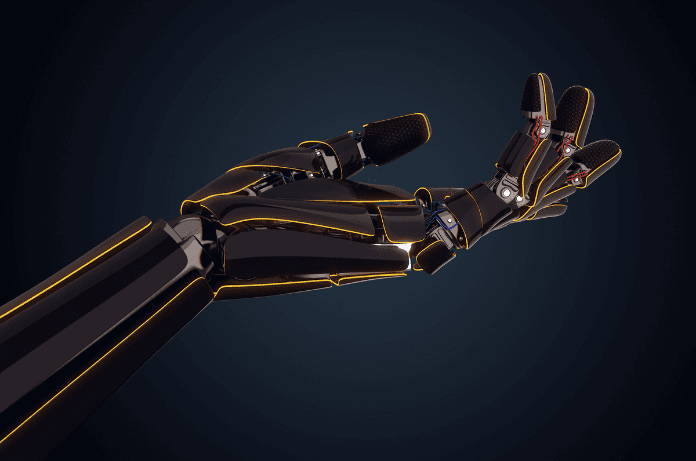Imagine regaining control of your hand after a stroke, when hope seems distant, and progress feels painfully slow. The Indian Institute of Technology Kanpur (IITK) has made a groundbreaking leap in stroke rehabilitation by developing a robotic hand exoskeleton powered by Brain-Computer Interface (BCI) technology. This innovation promises faster recovery and renewed hope for stroke survivors.
But what makes this invention so special? Let’s explore the details of this revolutionary device and why it’s making waves in the world of neurorehabilitation.
The Vision Behind the Breakthrough
This remarkable exoskeleton is the result of 15 years of dedicated research by Prof. Ashish Dutta from IIT Kanpur’s Department of Mechanical Engineering. His work was supported by the Indian Council of Medical Research (ICMR), the UK India Education and Research Initiative (UKIERI), and the Department of Science and Technology (DST).
Prof. Dutta and his team aimed to solve a critical problem: the brain’s limited engagement during stroke rehabilitation. Conventional physiotherapy often focuses only on physical movements without adequately involving brain activity, which is crucial for effective recovery.
The result? A device that not only assists physical movement but also actively engages the brain during therapy.
How Does the Robotic Hand Exoskeleton Work?
This cutting-edge exoskeleton uses a closed-loop control system to ensure that both the brain and muscles work together during therapy. Here’s how it works:
- Brain-Computer Interface (BCI): The device records EEG signals from the brain, specifically targeting the motor cortex responsible for hand movements.
- Robotic Hand Exoskeleton: The exoskeleton physically assists the patient in making therapeutic hand movements, like opening and closing their fist.
- Real-Time Feedback System: The brain signals and muscle activity (EMG signals) are synchronized with the exoskeleton, providing real-time force feedback for effective therapy.
This coordinated approach ensures that the brain remains actively involved throughout the recovery process, enhancing the brain’s plasticity and its ability to reorganize and adapt to new stimuli.
Why Is This a Game-Changer for Stroke Rehabilitation?
Stroke rehabilitation can be long, frustrating, and often uncertain. Many patients experience a plateau in recovery after the initial progress made in the first 6-12 months. However, IIT Kanpur’s exoskeleton brings new hope even for those who have hit that recovery plateau.
Prof. Dutta explains: “Our device combines physical therapy, brain engagement, and visual feedback, creating a closed-loop system that triggers brain plasticity and promotes faster recovery.”
In simpler words, the exoskeleton activates the brain and muscles together, making it far more effective than traditional physiotherapy.
Real Success Stories – The Proof Is in the Results
The effectiveness of this device has already been proven through pilot clinical trials conducted with the University of Ulster (UK) and Regency Hospital (India).
The Results:
- Eight patients (four from India and four from the UK) who had stopped making progress even 1-2 years after their stroke achieved full recovery.
- The device was more effective than standard physiotherapy, promoting faster and more complete motor function restoration.
These results highlight not just hope but the transformative potential of this invention.
Beyond the Lab: Large-Scale Trials and Future Availability
The next big step? Large-scale clinical trials are already underway in collaboration with Apollo Hospitals across India.
The goal is clear:
- Make the device available commercially within 3-5 years.
- Ensure affordability and accessibility for stroke survivors across the country.
This could be a life-changing development for millions of stroke patients struggling with long-term motor impairments.
Why It Matters – Hope for a Better Tomorrow
Stroke can be a life-altering event, not just physically but emotionally too. The frustration of being unable to perform simple tasks can affect one’s mental health, independence, and overall quality of life.
IIT Kanpur’s robotic hand exoskeleton brings more than just scientific innovation and brings hope. Hope that recovery is possible. Hope that progress can continue even when it seems to have stalled.
The Future of Stroke Recovery Is Here
The robotic hand exoskeleton from IIT Kanpur, powered by Brain-Computer Interface technology, has the potential to redefine stroke rehabilitation. By actively involving the brain alongside physical movement, it has shown groundbreaking results in both India and the UK, helping patients regain control of their lives.
While still in the trial phase, its success stories speak volumes. With the support of Apollo Hospitals, we can expect this device to reach stroke survivors in the coming years, transforming lives and offering a second chance at recovery. This invention not only pushes the boundaries of medical technology but also reminds us that with persistence and innovation, impossible recoveries can become possible.

